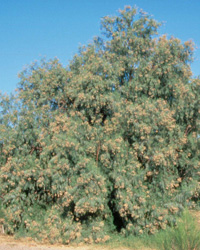 |
| NPS/Big Bend National Park | | Tamarisk, also known as saltcedar. |
 |
Whether you call them exotic, nonnative, or invasive species makes a difference. The general idea is the same, plants and animals have been transported the world around and some do well in other ecosystems. The finer definitions matter when talking about how successfull an animal or plant is outside of its home ecosystem.
Exotics
While all exotic plants/animals can be considered nonnative they are not all invasive. Many plants and animals have followed humans around the globe, though because of their close relationship with humans or the human created environment they are not succesful in a place like Big Bend. Animals that you may have in your backyard, like the European starling or the Rock Pigeon, were not in North America prior to European settlement. Likewise, these two birds are great examples of animals that are exotic and non-invasive in Big Bend. We do not have them here!
Invasives
We sadly say that we have many invasive species in Big Bend National Park. Of them, there are a handul that are the most noteworthy as a result of the impacts caused by thier spread.
Possibly the most well known and longest lasting invasive species in the park is Saltcedar, also known as Tamarisk. These trees were introduced to much of the desert southwest in the early 1900s as windbreaks and to lessen the impacts of soil erosion. Ironically, it is this plant that has caused some of the worst erosive features on the Rio Grande.
Whats worse, this tree is know to evaporate significant amounts of water, much more than a like sized cottonwood or willow would in a day. Equally depressing is the rate of spread for this plant, which has been known to resist cold teperatures, fire, floods, and drought.
| 





